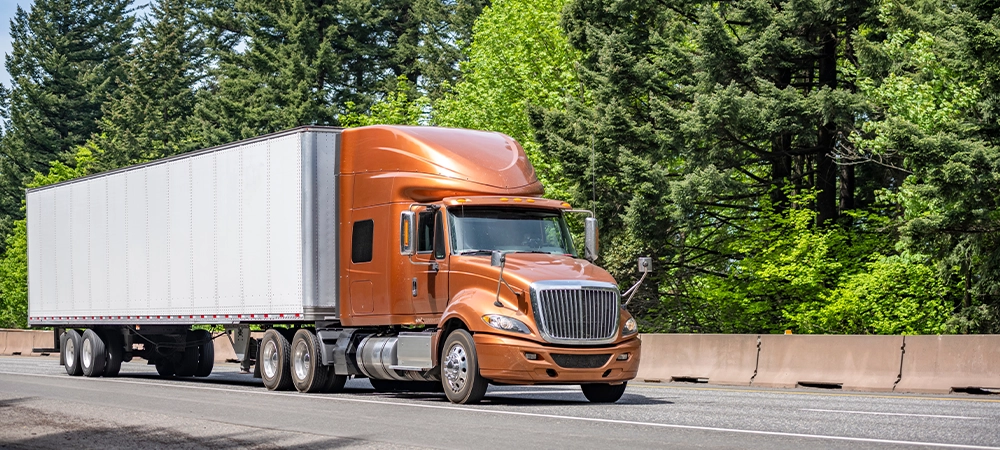Dry van freight is one of the most widely used shipping methods in North America—and for good reason. It’s versatile, secure, and ideal for transporting everything from packaged goods to retail inventory. As 2025 progresses, shippers are paying close attention to freight shipping rates, trying to manage costs while maintaining reliable delivery timelines.
Whether you’re moving goods within Canada or across the U.S. border, dry van freight rates have a direct impact on your logistics budget. And while some pricing trends are predictable, others are shaped by fast-moving industry factors.
What Are Dry Van Freight Rates?
Dry van freight rates are the costs associated with transporting goods using enclosed, non-temperature-controlled trailers. These trailers are the backbone of general freight shipping and are used to carry everything from boxed products to consumer goods and electronics.
Rates are typically calculated per mile and are influenced by several variables—route length, demand, fuel costs, and equipment availability, among them. Dry van shipping is popular because it protects cargo from weather and theft while offering flexibility across many types of freight.
Related Article: Dry Van Freight for AliExpress Sellers: Ensuring Safe and Secure Deliveries
Average Dry Van Freight Rates in 2025
Based on early 2025 data, here’s what dry van freight rates look like across key lanes:
- Domestic (Toronto to Vancouver): $2.50–$3.25 per mile
- Cross-Border (Toronto to Chicago): $2.75–$3.50 per mile
- Short-Haul Ontario Routes: $2.00–$2.75 per mile
- Toronto to Montreal: $2.25–$3.00 per mile
These figures reflect averages. Actual pricing can vary week to week depending on lane availability, load urgency, and market fluctuations. Contracted rates may differ from spot market pricing, which is more reactive to short-term demand.
Related Article: Explore the Cost Factors of Dry Van Shipping: Strategies for Cost-Effective Transportation Solutions
What’s Driving Dry Van Freight Rates in 2025?
Dry van rates don’t move at random. They’re shaped by a mix of economic, logistical, and seasonal factors. Here’s what’s influencing pricing this year.
1. Fuel Prices
Diesel remains one of the largest cost inputs for freight carriers. Through the first quarter of 2025, diesel prices across Canada have remained elevated, influenced by global oil trends and domestic fuel tax adjustments. As fuel prices rise, freight rates usually follow.
2. Driver Shortage
Canada’s trucking industry continues to face a shortage of qualified drivers. Despite efforts to bring in new talent, retirements and industry turnover remain high. With fewer drivers available, carriers are increasing wages and benefits—costs that factor into freight rates.
3. Cross-Border Demand
U.S. import demand from Canadian suppliers remains strong in 2025. As companies look to nearshore supply chains, Canadian exporters are experiencing higher demand. Increased cross-border volume is pushing up prices in key U.S.-bound lanes, especially those moving into the Midwest and Northeast.
4. Equipment Availability
Lead times for new dry vans and tractors remain long, and equipment prices have stayed high since the post-COVID supply chain crunch. Carriers running older fleets are also dealing with higher maintenance costs, which can impact pricing.
5. Insurance and Compliance Costs
Insurance premiums for commercial freight vehicles have risen steadily in recent years. Carriers must also stay current with regulatory requirements, from ELD compliance to cross-border documentation. These operational costs get built into the rate structure.

Seasonal Trends in 2025
Dry van rates are also affected by the time of year. Here’s how 2025 is shaping up seasonally:
- Q1 (Jan–Mar): Lower demand post-holidays; better rates available
- Q2 (Apr–Jun): Spring restocking pushes rates upward
- Q3 (Jul–Sep): Construction and consumer activity peak; rates are typically highest
- Q4 (Oct–Dec): Pre-holiday rush and weather disruptions cause volatility
Booking in advance and understanding seasonal surges can help businesses avoid costly surprises.
Spot Market vs. Contract Rates
There are two main pricing models in dry van shipping:
- Spot Rates: One-time quotes based on current market demand. These fluctuate often and are ideal for irregular shipments or last-minute loads.
- Contract Rates: Agreed pricing over a set time period (e.g., 6–12 months). These offer price stability and are better for companies with regular shipping needs.
In 2025, many shippers are shifting toward contracts to manage cost volatility. RoadLINX works with clients to develop custom pricing strategies based on volume, lanes, and service level.
How to Get Competitive Dry Van Rates in 2025
Rising costs don’t mean you have to overpay. Smart planning and strong partnerships can keep your shipping budget under control.
1. Plan Ahead
Last-minute bookings often come at a premium. Whenever possible, schedule shipments in advance—especially for long-haul or cross-border lanes.
2. Be Flexible
If you can offer flexible pickup or delivery windows, you may benefit from lower rates. Flexibility helps carriers plan routes more efficiently.
3. Consolidate Shipments
Shipping multiple small loads? Consolidating them into fewer trips can reduce your per-mile rate. This is especially helpful in LTL scenarios.
4. Work with a Trusted Carrier
Partnering with an experienced carrier like RoadLINX gives you access to dedicated equipment, real-time tracking, and consistent service. You also benefit from transparent pricing and fewer unexpected delays or fees.
5. Lock in Contract Rates
If you’re shipping high volumes or repeating lanes regularly, contract pricing can help you lock in a predictable cost structure, shielding you from market spikes.
Related Article: What You Need to Know About Dry Van Shipping Services

Common Questions About Dry Van Freight Rates
If you’re shipping goods by dry van in 2025, you’re likely wondering how rates are set, what impacts pricing, and how to keep costs down. Here are answers to the most common questions shippers are asking right now.
Are dry van rates expected to rise in 2025?
Yes, modest increases are expected due to higher fuel, insurance, and labour costs. Planning early and locking in contracts can help offset these changes.
Can I ship smaller loads via dry van?
Absolutely. LTL dry van service is perfect for partial loads. RoadLINX offers LTL shipping with competitive rates and reliable delivery windows.
What’s the best way to reduce freight costs?
Work with a carrier that offers load consolidation, flexible pickup times, and volume-based pricing. Avoid spot market rates when possible.
Is tracking included with dry van shipments?
With RoadLINX, yes. Every shipment comes with full tracking so you know where your freight is, in real time.
Why Choose RoadLINX for Dry Van Shipping?
With over 20 years in the industry, RoadLINX has built a reputation for reliable, cost-effective dry van freight services across Canada and the U.S.
Here’s what makes RoadLINX a top choice in 2025:
- Strategic Location: Based in Toronto, ideal for both domestic and cross-border shipping
- Advanced Tracking: Real-time shipment visibility using the latest tech
- Flexible Fleet: FTL, LTL, and dedicated service options to match your shipping needs
- Warehousing Solutions: In-house storage and distribution make logistics seamless
- Responsive Team: Personalized support from people who understand your business
Whether you’re shipping within Ontario, across provinces, or into the U.S., RoadLINX offers the scale, technology, and experience to get it done right.
Related Article: A Guide to Choosing the Right Freight Trucking Company for Your Business
Smart Shipping Starts With the Right Partner
Dry van freight rates in 2025 are being shaped by a mix of familiar and new factors—fuel prices, driver supply, seasonal demand, and cross-border trade. Staying ahead means understanding these changes and working with a carrier that can adapt with you.
At RoadLINX, we do more than move freight—we help you plan, save, and deliver on time. Whether you ship once a month or every day, we’ll help you get the most value for your shipping dollar.
Contact RoadLINX today for a custom quote or to speak with a shipping expert.



